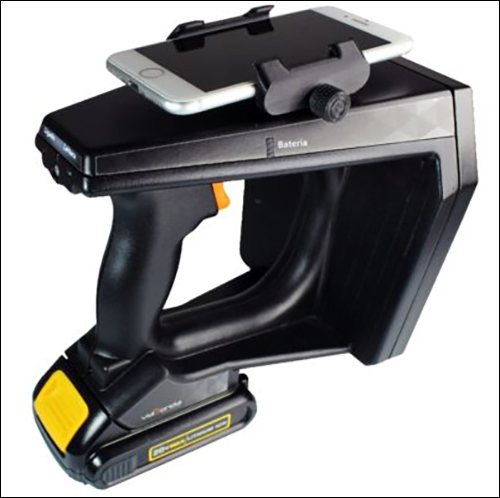Brazilian company Via Onda has announced the launch of a portable reader and a new tag that it developed and manufactured in Brazil. The MIDH2 is a portable UHF radio frequency identification (RFID) reader that allows the reading and recording of tags in the ranges established by Anatel, from 902 to 907 MHz and from 915.1 to 928 MHz.
According to the manufacturer, the equipment comes with an internal antenna, performs readings at an average distance of 8 meters (26.2 feet) and uses an integrated circuit from Impinj. The reader is being produced by Via Onda in Limeira, at the company’s headquarters, and a patent application in Brazil is in progress.
The company plans to launch the new handheld device at RFID Journal LIVE! 2020, which will take place on Apr. 28–30, in Orlando, Fla. With no public funding, “the project was carried out after research and contacts with customers interested in purchasing equipment with higher reading performance at a lower cost,” says Rafael Stephan Marchi, Via Onda’s CEO.
“The device received research investments and prototyping entirely internally. There was no external support,” Marchi says, affirming that the production target is between 100 and 200 units per month, with an estimated final customer cost of 5,900 Brazilian real ($1,350).
“The new reader can be used both in retail and in manufacturing, combined with the app developed by Via Onda,” Marchi states, “because it has versatility and applicability in all areas.” The sales estimate for the first year is 500 units until December 2020, and prototypes are currently in operation with two Via Onda integration partners in the states of São Paulo and Santa Catarina.
The tag was designed by and will be produced by Via Onda. The project was carried out after surveys and contacts with customers, to create a solution using RFID that enables activation by an RF field, allowing the identification of product boxes for separation and shipping. Investments in research and prototyping were fully made with Via Onda’s own capital, and patent applications in Brazil are also in progress.
The forecast is that the BAP—Via Onda’s new RFID UHF tag, which comes with an indicator light allowing it to be triggered individually—will also be launched at LIVE! in Orlando. Production will depend on demand, but it is estimated that 5,000 units will be generated per month. The sale value has not yet been defined, but it is expected to cost between 16 and 25 Brazilian real ($3.66 and $5.71), as it is a semi-active tag with the potential to trigger other devices. “At first,” Marchi says, “the tag is intended for industry, but it can also be used in retail and in manufacturing, depending on the objectives of customers.”
The sales forecast is that 30,000 units will be sold by the end of 2020. The prototype has already been tested in the laboratory and in the field, and will be put into operational testing by the end of the month at a large client in Piracicaba, in the tractor industry.



